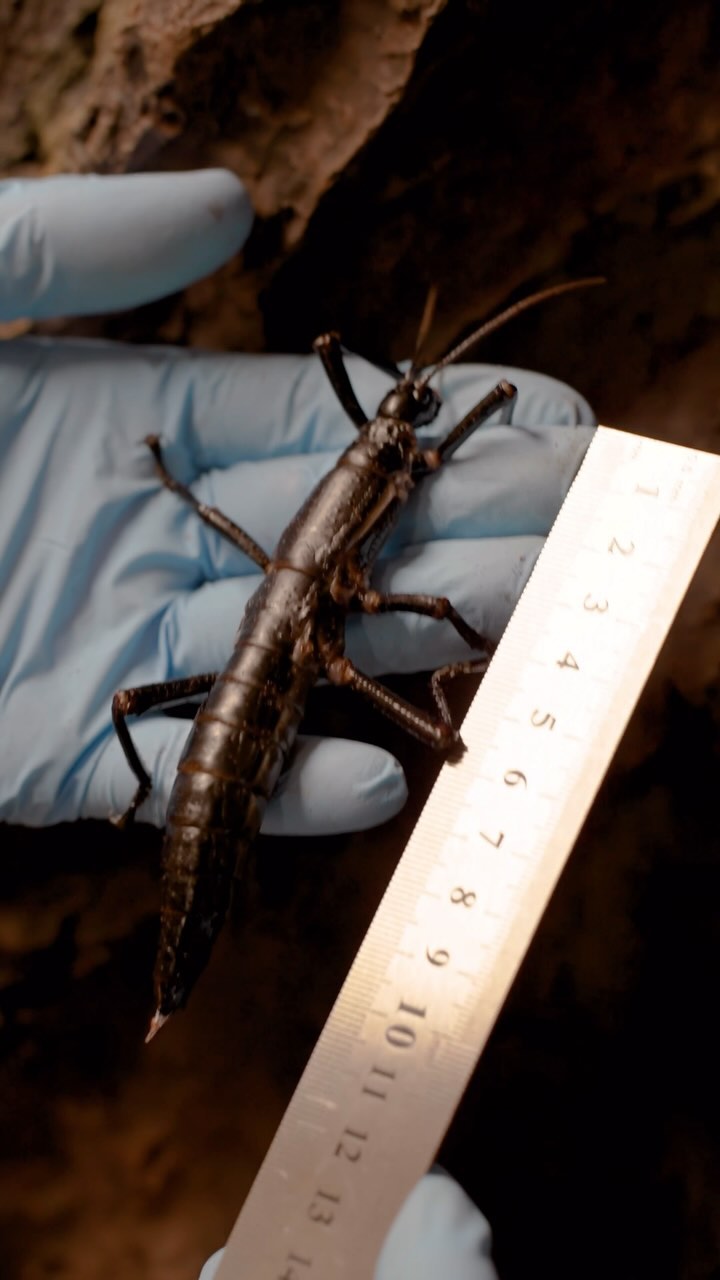– The biology and life cycle of the Lord Howe Island stick insect, known as the “tree lobster”
– Conservation efforts and the breeding program for the Lord Howe Island stick insect at San Diego Zoo
– The ecological significance of the Lord Howe Island stick insect and the role of conservation programs worldwide
– Challenges faced by conservationists in maintaining biodiversity and the importance of global cooperation
– How the public can support and advance conservation efforts for endangered species like the “tree lobster”
The Lord Howe Island stick insect, colloquially termed the “tree lobster,” is a remarkable species endemic to a tiny, volcanic crescent in the Tasman Sea. This remarkable creature boasts a formidable size for an insect, some reaching lengths of six inches when reaching maturity. The “tree lobster” adopts a nocturnal lifestyle, foraging through the foliage after dusk. Its life cycle begins in a humble egg, laid and carefully hidden in the forest litter. After hatching, the nymphs, which resemble miniature adults, face a gauntlet of survival, evading predators and competing for resources as they undergo multiple moultings until they reach their robust adult size.
The Lord Howe Island stick insect’s biology invites fascination as it encapsulates the resilient principles of life. Its robust exoskeletons and intense camouflage speak to millions of years of evolutionary design intended to protect it from predators and harsh environmental conditions. Its strong, clasping legs are perfectly designed for navigation among the dense canopies and for holding onto its mates during its unique courtship ritual, which can last for many days.
At the beginning of the 20th century, the “tree lobster” faced imminent extinction. The introduction of invasive rats to Lord Howe Island decimated their numbers, and by 1920, they were presumed extinct. However, in a twist of fate, climbing enthusiasts on the rugged spire of Ball’s Pyramid, a sea stack near the island, discovered a small population clinging to life in 2001. This finding was a scientific marvel and a testament to the species’ tenacity.
To prevent their complete disappearance, a breeding program was established at the San Diego Zoo. Here, the “tree lobster” found new hope as dedicated conservationists meticulously crafted an environment reminiscent of its natural habitat—a monumental challenge given the stick insect’s reproductive sensitivity and specialized dietary requirements. Through arduous efforts, the program saw notable success, becoming a pioneering symbol of conservation techniques for other similarly endangered species.
The Lord Howe Island stick insect is a case study in persistence and a crucial puzzle piece in the ecological tapestry of its native environment. The insect plays a significant role in nutrient recycling by breaking down leaf material and providing fertile soil for other plant life. Moreover, it serves as a food source for various other creatures, creating a complex web of interdependence. Preserving species like the “tree lobster” is vital for maintaining the structural integrity of ecosystems, hence why dedicated efforts in conservation are pivotal.
Conservationists face numerous challenges, ranging from habitat destruction and climate change to complex legal and bureaucratic barriers. However, one of the most significant hurdles in biodiversity conservation is ensuring enough genetic diversity within captive breeding programs to foster a healthy and sustainable population. The San Diego Zoo’s program addresses this with rigorous genetic monitoring, aiming to maximize the vitality of the species.
Global cooperation is essential in conservation efforts. Sharing knowledge, best practices and resources across borders can significantly impact the survival of numerous species on the brink of extinction. Moreover, public engagement and education play decisive roles. Awareness campaigns can lead to increased funding for conservation projects, new legislation for habitat protection, and a greater impetus for change on the ground. Individuals’ choices and advocacy can, collectively, create an effective force for environmental stewardship.
The fascinating tale of the “tree lobster” offers a narrative ripe with educational elements, an inspiring story of redemption and hope in the stark face of adversity. It embodies the ever-so-critical message that intervention can lead to remarkable recoveries.
The public’s contribution to the ongoing narrative of species like the Lord Howe Island stick insect can take many forms: supporting zoos and institutions that focus on conservation, advocating for stronger environmental policies, or even engaging in citizen science projects. Each of these actions contributes to a greater, unified effort to safeguard our planet’s rich legacy of biodiversity for future generations.
The tenacity of the “tree lobster,” nestled within the nurturing arms of conservation institutions, may yet offer a model of coexistence and recovery. It is our charge to heed this model and amplify our collective efforts to ensure such unique creatures continue to thrive.
As humanity faces the monumental task of addressing biodiversity loss, the example of the Lord Howe Island stick insect stands out, bringing attention to the plight and potential for recovery of countless other “silent” species that hover on the brink. The “tree lobster” is a testament to life’s enduring quality and the monumental work that lies ahead in the conservation sector. It is a call to action for us to cherish and protect the delicate balance of life on Earth, demonstrating how a singular species can become a much larger environmental imperative emblem.
*****
Source Description
“You’re my lobster.” – trees probably 🌳🦞
The Lord Howe Island stick insect, also known as the “tree lobster,” is a unique nocturnal insect. Despite its name, it’s neither a lord nor a crustacean, but it does have a royal presence, standing out with its large, flightless stature. When fully mature, it can reach lengths of up to 6 inches, making it quite the “ruler” of the insect world.
The Lord Howe stick insect breeding program at San Diego Zoo is part of an ongoing, collaborative effort to protect the world’s rarest insect. Once thought to be extinct on Lord Howe Island, a few were found on Ball’s Pyramid in 2001. This program highlights the importance of conservation in preserving biodiversity.


